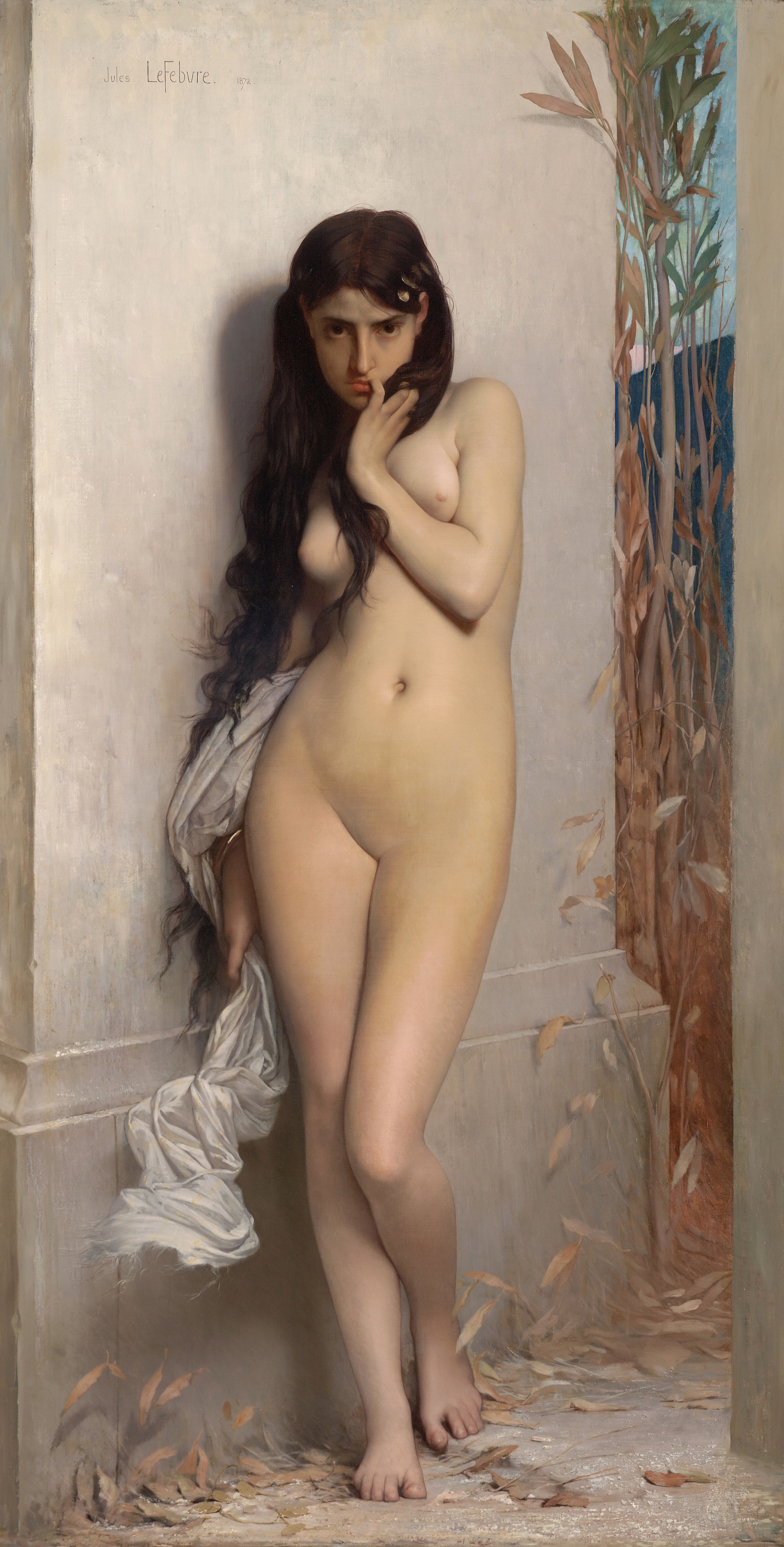Jules Lefebvre is known for his figures of beautiful women and his talent as a teacher. He was professor at the Académie Julian in Paris. Among his famous students were Fernand Khnopff, Kenyon Cox, Félix Vallotton, William Hart, Walter Lofthouse Dean, and Edmund C. Tarbell, who became an American Impressionist painter.
But back to the figures of beautiful women. La Cigale was first exhibited at the Paris Salon of 1872. It is one of Jules Lefebvre’s classic female nudes, which was presented as an allegorical illustration of a famous fable by Jean de La Fontaine, The Ant and the Grasshopper. In La Fontaine’s tale, the grasshopper spends the summer singing and playing while making fun of the industrious ant, who lays up stores and prepares his house for the winter. When the cold wind of winter blows, the ant is well prepared while the grasshopper, who has made no provision, begs for the ant’s help. The ant refuses, pointing out that as the grasshopper has sung all summer, she must now dance all winter. The painting was accompanied at the Salon by a line from La Fontaine’s Fable - Quand la bise fut venue (When the cold north wind blows).
Exhibited at the first Salon following the Franco-Prussian War of 1870-71, and the uprising of the Paris Commune in 1871, it is highly likely that Lefebvre’s painting also contains a critique of the short-sighted political vision of the regime of Emperor Napoleon III.




The Grasshopper
oil on canvas • 123.8 x 186.7 cm
 Jules Lefebvre
Jules Lefebvre